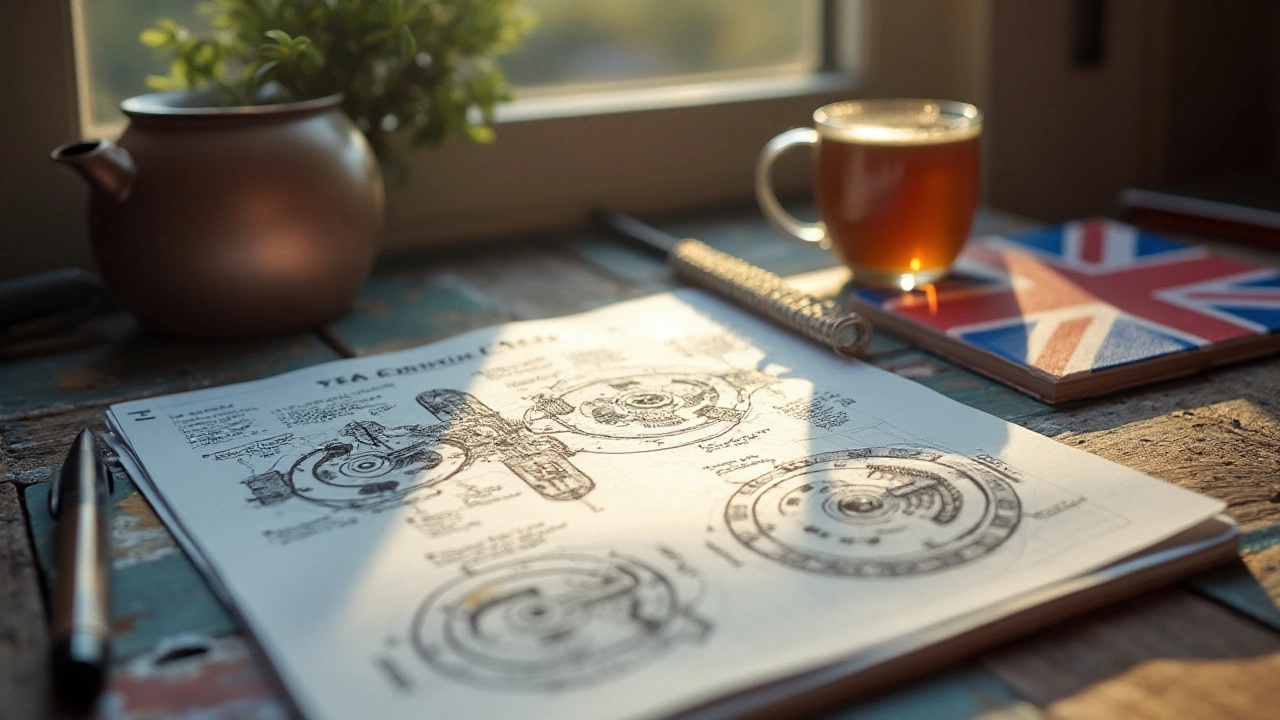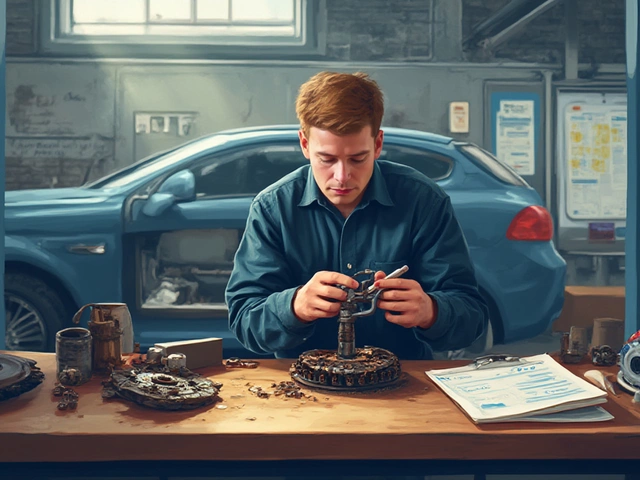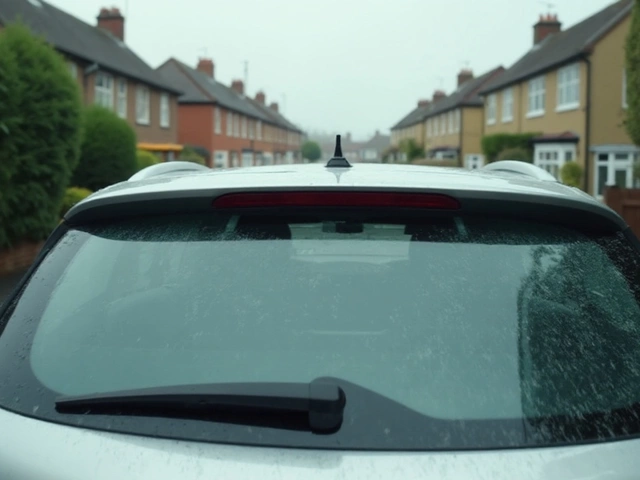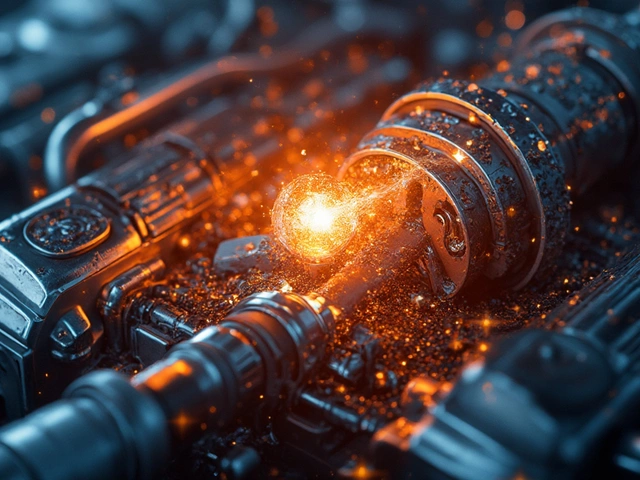When it comes to the longevity of your vehicle's clutch, there's no one-size-fits-all answer. Various influences, including personal driving style, environment, and mechanical condition, play a part in determining how long a clutch will last. Typically, with careful operation and regular maintenance, a clutch can serve its purpose efficiently over tens of thousands of miles.
Understanding what affects the lifespan of a clutch kit can not only save money on premature repairs but also enhance overall driving performance. In this discussion, we'll navigate through essential tips, insightful facts, and helpful indicators that ensure you make informed decisions about clutch care and maintenance. Your vehicle’s performance depends significantly on keeping these components in check.
- Factors Affecting Clutch Longevity
- Recognizing Signs of Clutch Wear
- Tips to Extend Clutch Life
- Common Causes of Clutch Failure
Factors Affecting Clutch Longevity
The lifespan of a clutch kit is influenced by numerous variables, many of which are often interconnected. To begin, let's think about driving habits—perhaps the most significant factor at play. Aggressive acceleration, frequent shifting, and staying on the clutch pedal longer than necessary can dramatically reduce the lifespan of a clutch. While some may argue that modern clutches are designed to withstand such treatment, it's undeniable that easing off on these habits can preserve the clutch for many years.
Vehicle type is another critical aspect. Heavy-duty vehicles, like trucks and SUVs, often have clutches designed to handle more strain, yet they may also face tougher conditions that can wear the clutch more swiftly compared to lighter cars that maneuver primarily in urban environments. In contrast, manual transmission sports cars might wear their clutches out faster due to the dynamic driving they endure.
"A well-maintained clutch in a standard vehicle can last anywhere from 50,000 to 100,000 miles, depending significantly on these factors," according to the Automobile Association.
Environmental and Mechanical Considerations
Beyond driving style and vehicle type, environmental impacts should not be underestimated. Think of stop-and-go traffic that city drivers face, which can lead to more frequent clutch engagements and higher wear rates compared to highway driving where gear shifts are infrequent. Weather and climate also come into play; harsh conditions such as extreme heat or icy conditions can take a toll on clutch components.
Mechanical elements cannot be ignored either. Keeping a vigilant eye on related systems, like ensuring that the hydraulic fluids are regularly checked and topped up, ensures that everything runs smoothly under the hood. Misalignments or worn parts, if not addressed on time, can lead to quicker degeneration of clutch components. This is why regular maintenance is key, not just for the clutch but for the entire car.
Speaking of which, let's not overlook the impact of the clutch material itself. Organic clutches are more common and provide a decent lifespan for everyday vehicles. For those seeking superior durability, ceramic and Kevlar clutches often offer enhanced longevity despite a potentially higher upfront cost. Each material brings different benefits and trade-offs in terms of performance and lifespan. A clutch's durability is ultimately a sum of how well these variables are managed over time, illustrating that a proactive approach to car maintenance can go a long way in keeping your vehicle running smoothly.

Recognizing Signs of Clutch Wear
The clutch system serves as the vital element connecting your car’s engine to its wheels, allowing you to drive smoothly and change gears effectively. Understanding the subtle warnings it gives when failing is crucial for timely clutch maintenance. One of the most common signs is a slipping clutch, which might be felt as a lack of acceleration despite the engine still revving. This happens more prominently during heavy load tasks, like climbing hills or towing. The wearing of clutch disks, pressure plates, or flywheels can lead to this symptom, indicating that your clutch might be nearing the end of its lifespan.
Another telling sign is the difficulty in changing gears. It could feel like the gears are sticky or there's resistance when you shift. An aging clutch can cause this because it ceases to disengage fully, resulting in incomplete gear engagement. Listen carefully; if you hear grinding noises when shifting, it may not merely be an issue with your transmission but an indicator that your clutch needs attention. Pay attention to a spongy or sticking clutch pedal as well. It might indicate a master or slave cylinder leak or a need for hydraulic fluid. These hydraulic issues not only affect how the pedal moves but also how easily you can shift gears.
If your vehicle exhibits vibrations upon engaging the clutch, don't overlook it. Known as clutch judder, this might be caused by an oil leak seeping onto the clutch disk, warping in the flywheel, or misalignment issues. These vibrations are certainly more than a mere annoyance; they’re a significant indication that something is amiss in the clutch mechanism.
"The clutch should feel like an extension of yourself. If it feels different, it's telling you something," said renowned automotive specialist, John Clarke.In some cases, increased engine noise without the associated speed accompanies clutch wear. This noise increase is often a sign of bearing issues or clutch plate deterioration, both essential factors needing immediate diagnosis.
Performing regular checks can help, but knowing these warning signals can bridge the knowledge gap in identifying a problem. Taking note of your clutch’s performance daily and being aware of these symptoms helps maintain the health of your vehicle’s clutch kit. Be proactive if any of these signs present themselves by seeking professional advice to avoid major breakdowns, especially because a timely intervention can prevent further damage to related components. A well-maintained clutch not only improves vehicle clutch durability but also increases safety on the road.

Tips to Extend Clutch Life
Extending the life of your clutch kit requires attention to detail and a keen eye on habit adjustments. One of the most influential factors in clutch longevity is the driving style. Aggressive driving, characterized by rapid acceleration and abrupt stopping, places tremendous strain on the clutch components. By adopting a smoother approach—gradually accelerating and decelerating—you significantly reduce wear. It's also crucial to avoid riding the clutch, which means keeping your foot off the clutch pedal when it's not in use. This careless habit might feel comfortable in stop-and-go traffic, but constant pressure on the clutch leads to unnecessary friction and faster degradation.
Pay close attention to how you engage and disengage the clutch. Rapid starts and stops can cause the clutch to slip, wearing it out more quickly. Instead, focus on smooth lever movements. Another critical habit is appropriate gear use—understanding when to shift gears can make a considerable difference. Avoid low gear driving when you can utilize higher ones to cruise—this simple change takes a lot of work off the clutch. As a rule of thumb, a higher gear is typically more gentle on your car clutch.
Routine maintenance checks are vital for clutch durability. Regular inspections by a professional can catch small issues before they become significant problems. If you notice any unusual behavior from your clutch, such as vibrations or a burning smell, address these concerns promptly. Keeping your clutch components well-maintained can prevent costly repairs down the line. Regularly check for leaks in your clutch system, as hydraulic fluid is crucial for smooth operations. Many dealerships offer complimentary checks or at a reduced cost if regularly serviced there—take advantage of these services.
Adverse conditions can also impact the lifespan of your clutch. For instance, driving in rugged terrains or towing heavy loads demands more from your clutch. Try to adapt your driving based on these conditions, taking extra caution and care during operation. It might be beneficial to refer to your vehicle’s manual for specific guidelines suited to your car model and the varying environments it might encounter. Another useful tactic is vehicle lightening, avoiding hauling unnecessary weight, which in turn decreases the workload on your clutch.
Education is a powerful tool in extending your clutch's life. Understanding how clutch kits work and the signals they emit when in distress allows for preemptive care. Investing time in learning the intricacies of clutch operation enhances your driving experience. Let's not forget that keeping your vehicle clean can indirectly contribute. Dust and grime can seep into your clutch system, making it essential to ensure the area is clean and free from foreign particles. Consider washing your vehicle regularly and inspecting it for any parts that need attention.
"Good habits play a vital role in maximizing the potential of any clutch system," notes automotive expert, John Richman, "It's all about consistency and care."
Finally, if your clutch is wearing out sooner than expected, consider quality during replacement. Opting for a top-tier clutch kit from reputable brands can make a substantial difference in both performance and lifespan. After all, a well-chosen product, when coupled with mindful use, stands a much better chance to last longer and ensure a smooth driving experience. By following these strategies, you’ll ensure that your journey is smooth and your expenses controlled.
| Driving Habit | Impact on Clutch Life |
|---|---|
| Smooth Acceleration | Increases Longevity |
| Aggressive Driving | Decreases Longevity |
| Avoid Riding Clutch | Enhances Clutch Life |

Common Causes of Clutch Failure
Understanding why clutches fail can be a game-changer for many car owners. One of the most significant factors leading to clutch failure is driving style. Many drivers unknowingly cause excessive wear by not fully engaging or disengaging the clutch while shifting. Riding the clutch pedal, a habit where drivers rest their foot lightly on the pedal while driving, can keep the clutch partially engaged and lead to wear over time. Such habits may seem harmless but can dramatically reduce the clutch kit lifespan.
Another common cause is excessive load and incorrect driving techniques – especially in vehicles like trucks or cars frequently hauling heavy loads. The added weight puts extra stress on the clutch system. Not using the correct gear for the speed and load, like using higher gears at slow speeds, can also wear out the clutch disk and its components more quickly. Drivers should ensure they are well-versed with their vehicle's load capacity and use the gears adequately. As a matter of fact, the torque and power distribution through improper gear use can lead to faster heating and eventual slippage of the clutch.
Environmental factors also play a vital role in vehicle clutch durability. Driving in stop-and-go traffic, often seen in urban settings, forces drivers to constantly engage and disengage the clutch. This frequent operation elevates wear, unlike highway driving that offers more consistent speeds. Extreme weather conditions can further exacerbate this problem. Colder climates, combined with salt used on icy roads, not only challenge driving efforts but can lead to quicker corrosion of the clutch mechanism.
Poor maintenance can lead to clutch failure. Regular inspections and timely replacements can prevent many clutch-related issues. Vehicle manuals provide manufacturer-recommended service intervals for clutch systems. Overlooking regular checks can lead to unnoticed small issues that later build up to critical failures. One should pay attention to unusual signs like difficulty in engaging gears, spongy clutch pedal, or odd sounds when pressing the clutch pedal.
"Routine car maintenance is key. Preventive measures can extend the lifespan of a car's clutch significantly," remarked John Smith, chief mechanic at AutoLine Magazine.
It's important to note that each component in the clutch system depends on the others for optimal function. Damaged pressure plates, worn-out bearings, or a distorted flywheel can lead to clutch failure. Identifying and addressing even minor wear early can prevent premature and costly repairs. This integrated approach ensures every component is in good health, ensuring the longevity of the clutch system.
| Factor | Impact on Clutch |
|---|---|
| Poor Driving Habits | Increased Wear |
| Heavy Loads | Excessive Stress |
| Stop-and-Go Traffic | High Frequency of Use |
| Neglect in Maintenance | Leads to unnoticed failures |






